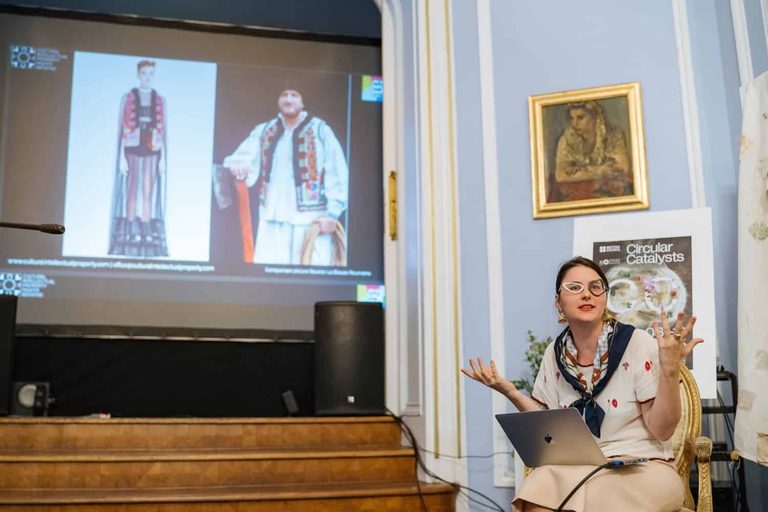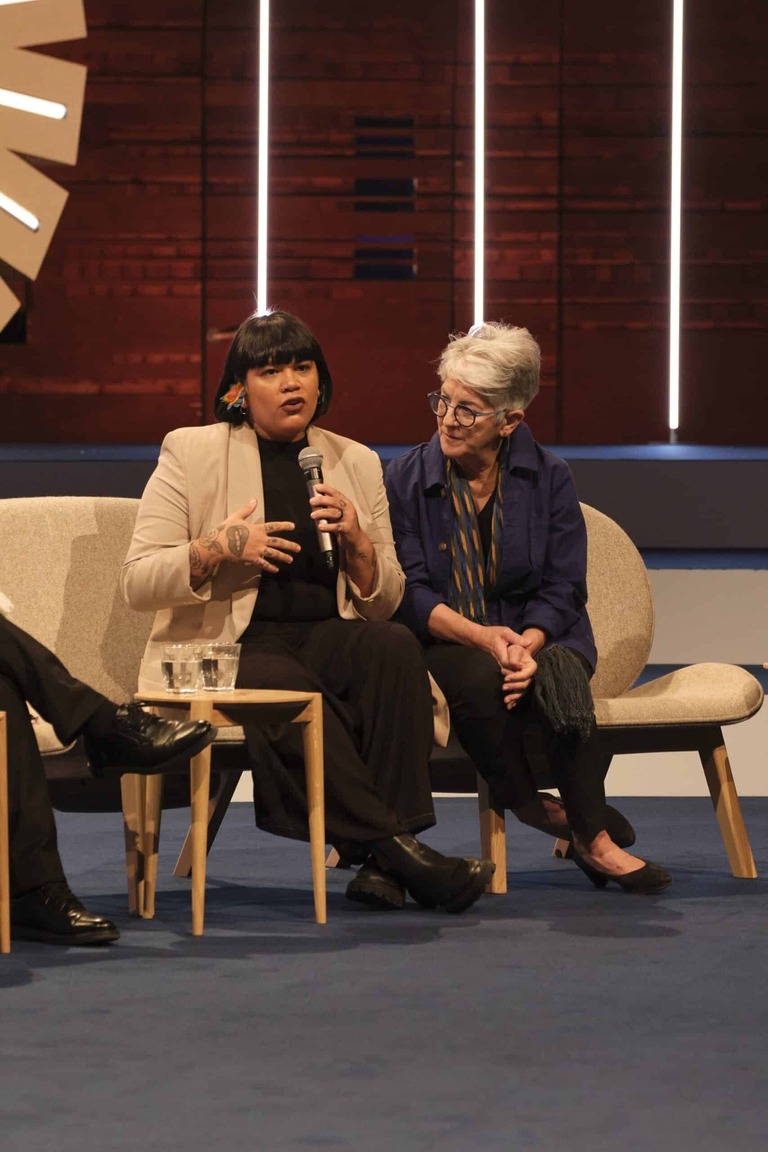https://www.lifegate.it/moda-comunita-indigene
- |
- In fashion there is no shortage of episodes of "cultural appropriation" by big brands or designers towards various indigenous and local populations, without there being any consent, credit or compensation.
- The relationships between fashion companies and populations that supply raw materials, often high-end, such as certain types of fibers or wool, are also often unbalanced.
- This is why more and more scholars and experts are talking about "cultural sustainability" for fashion.
- In May 2024, the first guidelines for collaboration with indigenous communities specific to the fashion industry were published, which aim to create equal partnerships with a long-term vision agreed between the parties.
The relationship between fashion and indigenous and local communities seem to have been unstuck for some time.The latest tear in chronological order concerns a Louis Vuitton designer shirt which is incredibly similar in cut and embroidery to a traditional Romanian shirt (which from 2022 it is also a UNESCO intangible cultural asset).So much so La Blouse Roumaine, an online collective dedicated to the promotion and protection of the aforementioned blouse, has made itself heard as far away as Paris to receive the right credit.This is not the first time that fashion has faced a case of so-called “cultural appropriation”, that is, it copies without consent a design, a textile pattern, an accessory that is part of the tradition of an indigenous population or a local community, sometimes citing vague folk or bohemian inspirations.
Fashion and indigenous and local communities:the issue of intellectual property
“The only thing I want to comment in relation to this case is that in 2021 I founded an NGO called WhyWeCraft, which supports companies in creating knowledge partnerships with the custodians of craftsmanship, to work together in an effective and culturally sensitive way, ensuring that no cultural appropriation occurs”, explains Monica Boța-Moisin, Romanian, lawyer and founder of the Cultural Intellectual Property Rights Initiative.“We work on the basis of a contractual framework that I created in 2017 and which is called 3C rule.The 3Cs stand for: consent (free, prior and informed consent of the artisan, indigenous or local community), credit (recognition of the community of origin and inspiration) e compensation (monetary, non-monetary or a combination of the two)”.

Moisin was interested in intellectual property right from the start, and today brings together the legacy of her two grandmothers:one was a lawyer, the other was passionate about weaving, embroidery and lace.“I wanted to create something that would help local or indigenous community craft keepers so they could collaborate in partnership with fashion brands, enhancing their cultural identity and receiving the right credit and compensation.In 2018 I did a master's degree in Sweden specifically on textiles and I understood that my field would be cultural sustainability".Since then he has traveled all over the world, to Chiapas, Laos, India, Guatemala, Uganda, to come into contact with indigenous and local communities and fully understand the links with creative cultures and traditions, in order to best protect them.
The first guidelines for collaboration between fashion and indigenous communities
The relevance of the theme is such that in May 2024 at the Global Fashion Summit in Copenhagen the first guidelines for collaboration with indigenous communities specific to the fashion industry.The "Indigenous partnership principles for the fashion, apparel, and textile industries” were created after long consultation and the direct involvement of indigenous representatives from around the world, at the request of the NGOs Conservation International, specialized in nature conservation and biodiversity, and Textile Exchange, a non-profit with the aim of guiding the transition sustainability of the textile sector, with the support of the luxury group Kering.The result is 12 principles which invite companies to collaborate transparently, on equal terms, at fair compensation, to create real partnerships, whether it be creativity, the supply of raw materials, or textiles and semi-finished products.
The fashion industry has, in fact, often built a unequal relationship with indigenous and local communities also with regard to the supply of raw materials, sometimes very precious, like some wools:a Bloomberg reporter recently did an investigation on the shadows of the relationship between the Italian company Loro Piana, part of the French luxury group LVMH, and a community in the Peruvian Andes that supplies them with fiber from the vicuna, an Andean animal.

What does "cultural sustainability" mean and why we talk about it
One of the major scholars of cultural sustainability and "decolonization" of the Western-centric fashion system is the Italian Francesco Mazzarella, originally from Agrigento, graduated from the Polytechnic of Turin, today lecturer (reader) in Design for social change at the Center for sustainable fashion of the University of the arts London (his current research project is called "Decolonizing fashion and textiles”).
We intercept him just before his trip to Vietnam and Australia, to visit various projects underway in some indigenous and local communities.“I have always been interested in craftsmanship, but the turning point was my master's thesis in Brazil, where I came into contact with the processes of sustainable development and social innovation focused on artisan communities.During my PhD I focused on fashion and textiles specifically, as vehicles for social change“, he says from London.“In the field of sustainability, three interdependent pillars are always mentioned – people, planet, profit – but in reality some scholars add a fourth, culture.For cultural sustainability we mean those tolerant systems that identify and promote the diversity of cultural heritage, beliefs, practices, stories, in connection with people and territory".

Mazzarella, who also works closely with refugee communities in London in the field of fashion and craftsmanship, has an approach aimed "at overturn the dynamics of teaching on sustainability from the north to the south of the world, to show how much we can learn from indigenous and local communities in terms of cultural sustainability and community resilience.The communities must become an active part of the processes of sustainable development and social innovation and not be treated as simple recipients of top-down strategies."He concludes by underlining the need for a long-term vision when talking about collaboration with indigenous and local communities:“It often happens that designers personally go to these communities to create a collection, perhaps with a specific and temporary project, but they leave without triggering a long-term impact, on the contrary creating false expectations about the future, without developing something more lasting together."
The activism of indigenous creatives and the voice of local communities
From the same ones indigenous communities and locals, more and more voices of creatives and leaders who want to be raised protect its cultural and creative heritage in textiles and design.Among them, the Brazilian designer Dayana Molina and the Nigerian Nkwo Onwuka they both collaborated in the drafting of the aforementioned "Indigenous partnership principles", but also Carla Fernandez, which with its brand wants to preserve and revitalize the textile heritage of the indigenous communities of Mexico.Or, again, House of Tengri is a rare example of a textile brand that purchases high-end natural fibers directly from farmers and shepherds, paying them competitive prices and establishing long-lasting relationships, in an ethical and transparent supply chain.
Among the different personalities, there is also Niha Elety, designer and activist for cultural sustainability.Born in Hyderabad, central India, she moved with her family to the United States at the age of 11.In 2022 he founded the ethical brand Tega Collective:“The project was born from the need to amplify the voices of Adivasi communities (indigenous to South Asia) and their craftsmanship.I wanted to collaborate directly with them, because I saw that their creative work was being reproduced en masse by other people, without any credit.In each clothing collection we collaborate with unique artisans, highlighting their native fibers, indigenous dyes, loom weaving patterns and symbols.15% of our proceeds are donated to the communities we work with for each collection, to eliminate the traditional hierarchy of power and profit.3% of profits are donated to organizations that support the regeneration of indigenous communities and land restitution initiatives."
Elety concludes:“Cultural sustainability amplifies and transmits cultural knowledge and practices to future generations, honoring the people and work that came before us.In fashion, textile craftsmanship plays a vital role in preserving cultural legacies and shaping distinct cultural identities through the traditional clothing of various global communities and indigenous groups.Fashion brands can collaborate with indigenous artisan communities as partners, instead of stealing their work.This means partner with communities who are already looking to profit from their craft, move towards localized systems, restore native fiber cultivation practices and garment use, broaden the aesthetics we idolize, and reckon with how we value clothing.”
